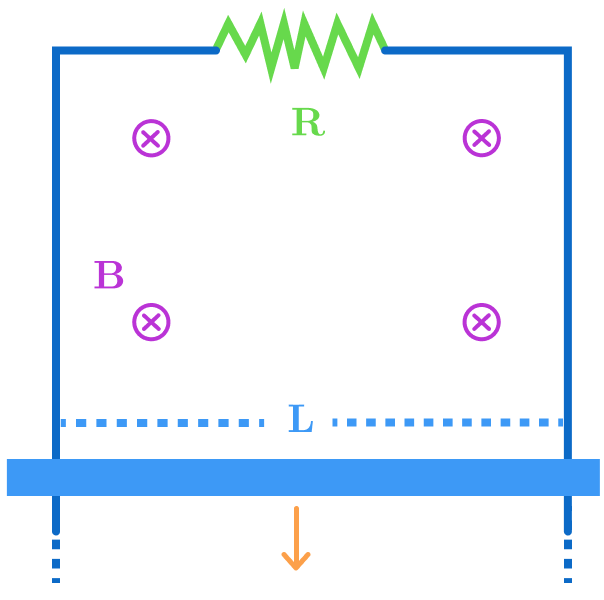Mechanics or what?

A horizontal conducting rod of mass is free to slide on two vertical conducting rails as shown. What is the terminal speed of the rod?
Details and Assumptions:
- A uniform magnetic field of intensity exists throughout the region and points into the screen.
- The length of the rod is .
- The resistor has resistance .
Bonus What will happen if the magnetic field is outward? Will the rod attain terminal velocity?
Try my next problem here
This section requires Javascript.
You are seeing this because something didn't load right. We suggest you, (a) try
refreshing the page, (b) enabling javascript if it is disabled on your browser and,
finally, (c)
loading the
non-javascript version of this page
. We're sorry about the hassle.
At terminal velocity, induced EMF, e = B v L where v is the terminal velocity of the rod
i = R e
i = R B v L
Upwards force experienced by rod is
F B = B i L
F B = R B 2 L 2 v
This should be equal to m g
∴ v = B 2 L 2 m g R